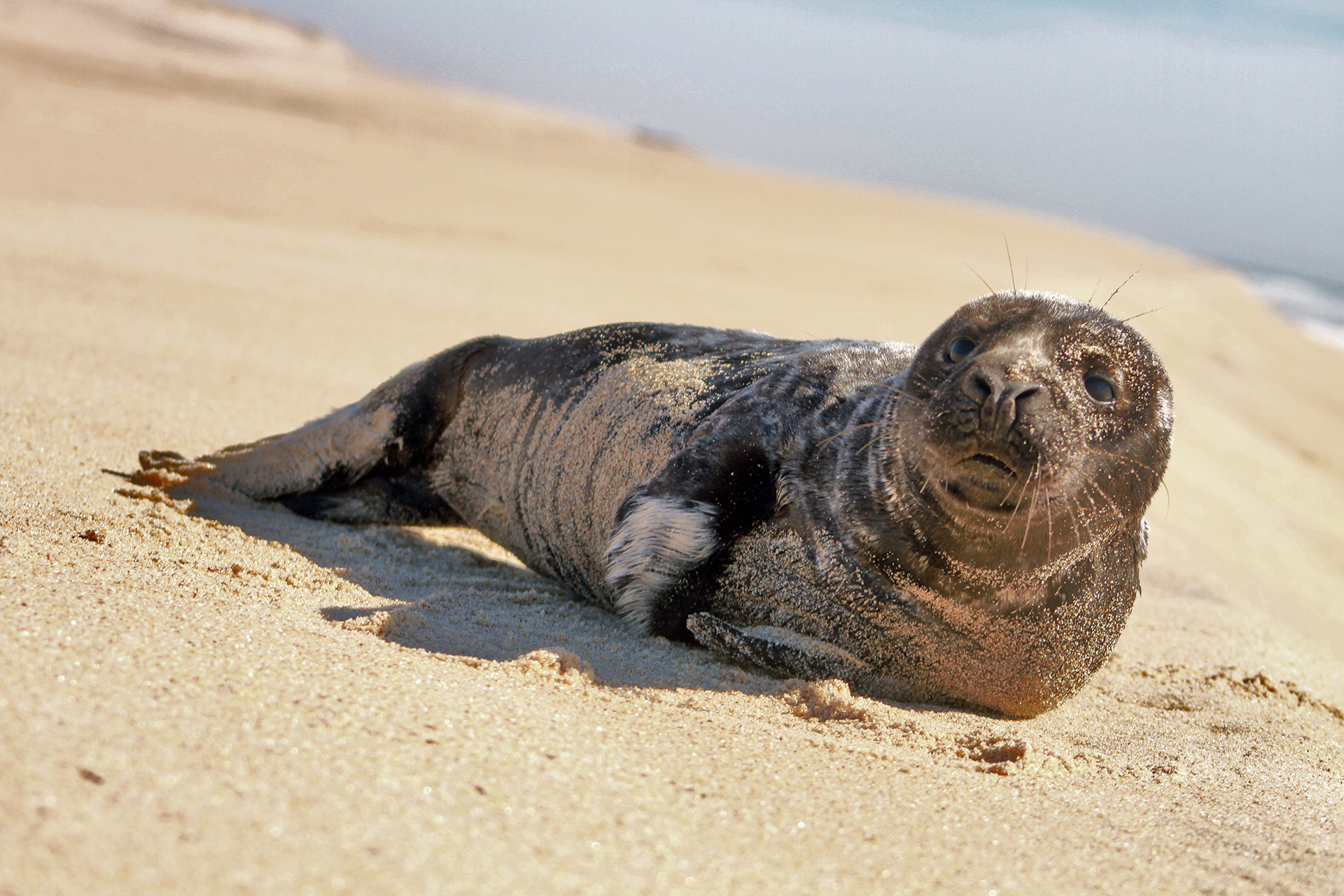Leave The Seals Alone

East End police departments, particularly those on the Atlantic Ocean, have a message for recent arrivals: Stay away from beached seals.
Lt. Susan Ralph of the Southampton Town Police Department sounded the alarm last week, reminding the public “it is normal for seals to come rest on the beaches of Southampton Town.” She said that people should “absolutely not approach a seal on land.” Do not, under any circumstances, attempt to pick the animal up, or force it back into the water, and do not feed it, she said.
The East Hampton Village police would likely have signed onto that press release. It has become routine for the department to receive multiple reports each week of a “seal in distress.”
Dell Cullum, an expert on wildlife animals based in East Hampton, attested to that.
“I’ve been getting calls every day for the past two weeks, and they are mostly about the same seal,” he said.
It was a baby gray first spotted on Indian Wells Beach in Amagansett that had slowly been making its way east.
Seals, he said, are semi-aquatic animals who spend as much time on land as in the sea.
“People don’t realize — they see them on the beach and they think they are out of place,” he said. “They are not.”
A common mistake that many make, Cullum said, is thinking a seal is wounded as it is sunning on the beach. Young seals molt, and the dark under layer of fur can appear to the untrained eye as a wound. Also, he said, seals do get abrasions in the ocean, living in a world of rocks and waves.
“It’s tough down there,” Cullum said. “It’s not ‘The Little Mermaid.’”
The seal population has been increasing on the East End in recent years, he added, a possible sign of a healthier oceanic environment in nearby waters.
Seals also can move a lot farther and faster on land than people realize. Twice in recent years, he has assisted in rescuing seals that came ashore on an oceanfront or sound-front property, wandered down a long, long driveway, only to end up on a public road.
Recently, a seal came ashore at Maidstone Park Beach. The seal “went through the Maidstone Club grounds, through the golf course, into the pond, then into a yard, ending up in a fresh water rain puddle,” Cullum said. The disoriented animal was returned to the ocean.
Seals are protected by federal law. It is illegal to get closer than 150 feet from them. The only East End agency licensed to handle seals is the New York State Marine Rescue Center, based in Riverhead. Cullum always defers to that organization.
Marine rescue guidelines, Cullum said, say to give the seal on the beach 48 hours before becoming concerned.
Also, seals carry aquatic diseases that landbound mammals, such as humans, do not have antibodies for.
The basic rule of thumb for seals on the beach is simple: appreciate their beauty, but respect their space.
t.e@indyeastend.com








